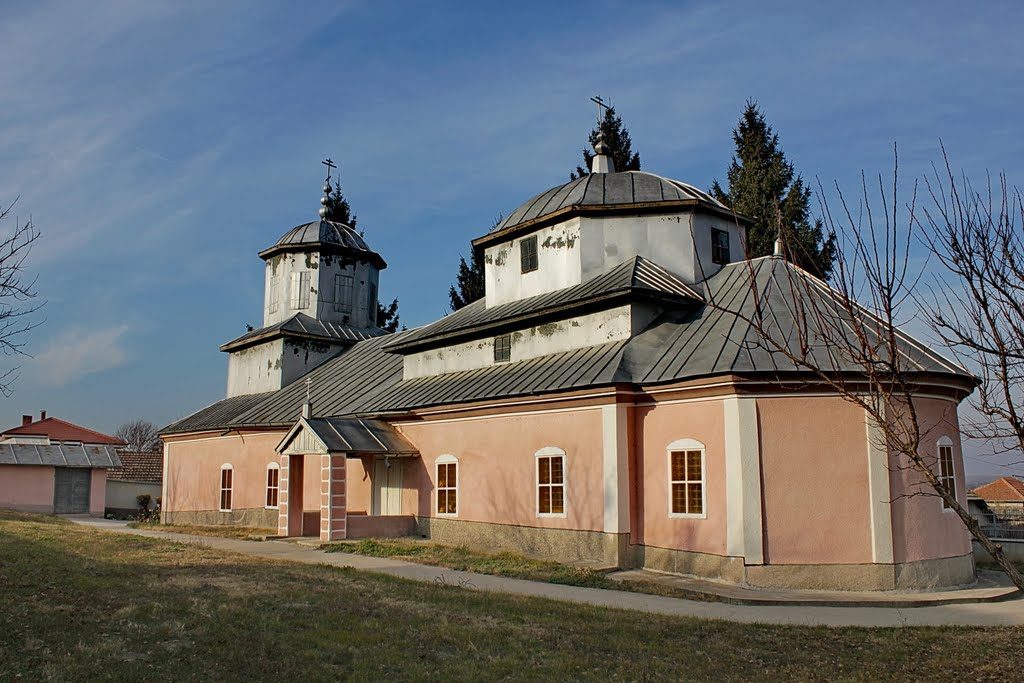

Each temple is named in the memory of an event in the life of Jesus Christ, Virgin Mary or in the memory of the Apostles. Pokrov Mother of God was chosen as a name or in Russian “Presvetoy Pokrov Mother of God”. The Russian church, as it is known, is located in the former village Tataritsa, which today is part of Aydemir.
Originally there was only a chapel, but church services were conducted here as well. Later, the chapel extended, is sanctified and becomes similar to its present appearance. The temple is an architectural genuine monument keeping and recalling the history of the village and its settlers, who came from distant Russia. To this day he continued to push and maintain the ancient Orthodox spirit in them.
To build the church were chosen models used by other Orthodox churches. It has a rectangular shape and the locals compare it with a ship floating on the waves of life and they trust into salvation for all the troubles and problems of life.
In the roof is structured a head, on which is placed an ancient Russian cross. At the end of the temple was built a bell tower with seven bells. Inside, the temple is split in three parts: an altar, a middle part and the narthex.
The altar is the main part of the temple and is intended for priests being inaccessible to ordinary people without a good reason. Men can enter into the alter for certain rituals, but for women it is completely forbidden. The altar is located in the east of the temple and the entrance to the west, which symbolizes the passage of Christians from the darkness to the light – Jesus Christ. In the middle of the altar there is a chancel table (decorated tablecloth), intended for the invisible presence of Jesus Christ during the Divine Liturgy.
The altar is the light of the temple and only the saint’s servants are allowed to touch it. There they prepare the sacraments. There are kept the relics of the church, the Gospel and the cross. To the left of the altar there is another table called “altar” because it is intended for sacrifices without bloodshed and to receive the Communion bread in the memory of the living and the dead. The altar is separated from the middle part of the iconostasis with three doors – north, south and main curtain and two door folds – Ard (Royal Doors). They are called “royal” because it is assumed that during the great progress in the Holy Gifts Christ is entering also in the altar. On the right of royal doors of the iconostasis is depicted Jesus Christ, at its right the Mother of God, under them The Last Supper and above them the four evangelists and the Annunciation of the Virgin Mary. Above is described the life of Jesus Christ, the saint apostles and prophets and above the holy cross. After the iconostasis in the central part of the church is the pulpit and on each of its sides there’s the aisle – for singers and saints. On each end are placed horugvi (religious flags) required at church celebration. The part from the exit is called narthex. This is where the holy baptism is performed for those who did not accepted or did not confessed their sins. Men are standing in the middle section closer to the altar and the women as far as possible.
The sections are separated by decorative walls on which icons were placed like in the iconostasis. Candles are placed nearby on candlesticks. On the men side (right) there is an imitation of Lord’s Cross. At the top of the main dome descends a large chandelier. The steeple is placed on top above everything. It is said that the biggest bell was given by a rich Russians and there was a large amount of impurities in the gold. It was heard very far away, but in 1939 there was a major fire and the bell fell from a high level and was broken. It is said that when the authorities decided that no one knew the amount of impurities and they extracted the gold. Therefore, the new bell’s sound was different and did not have an echo as the old one.
